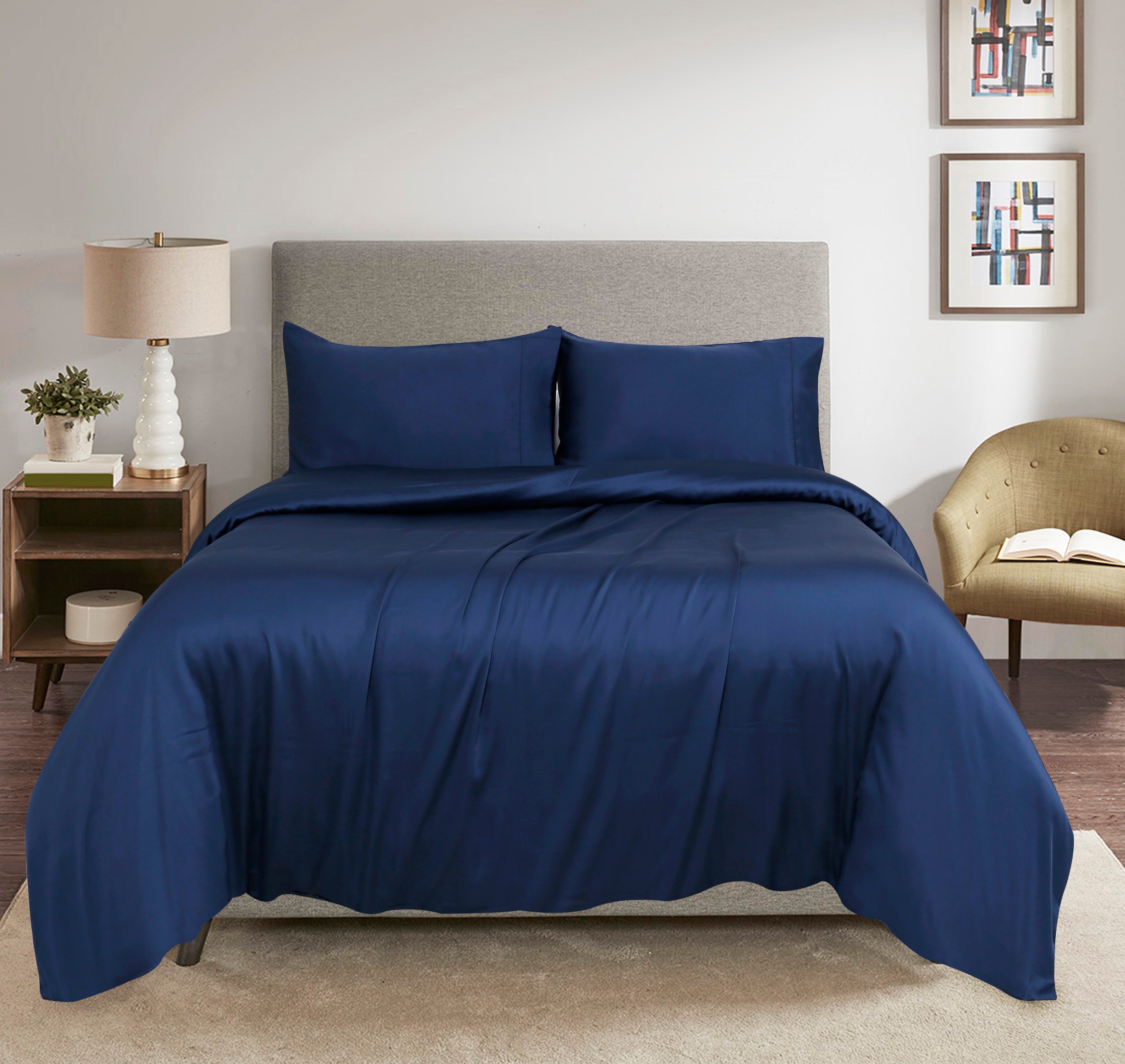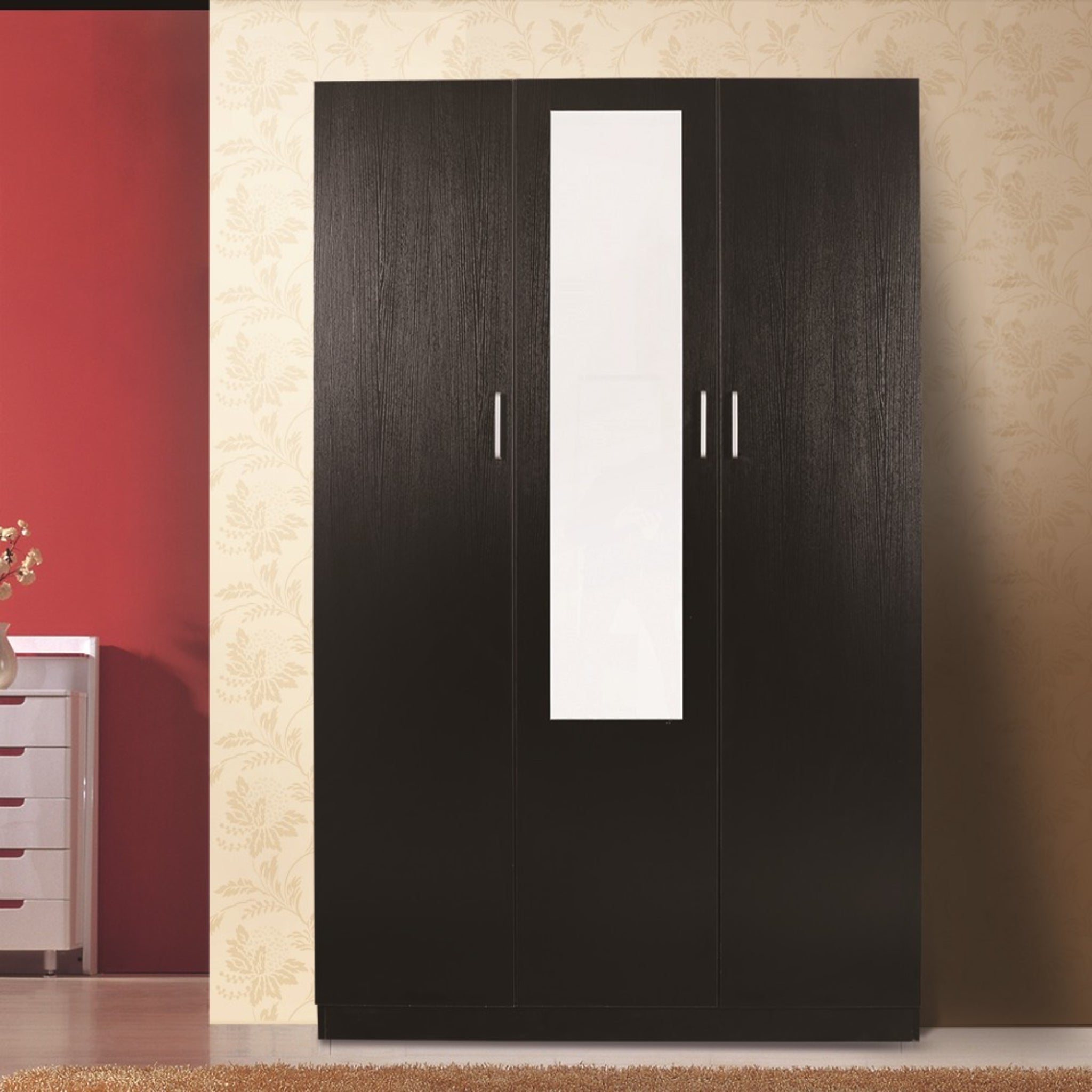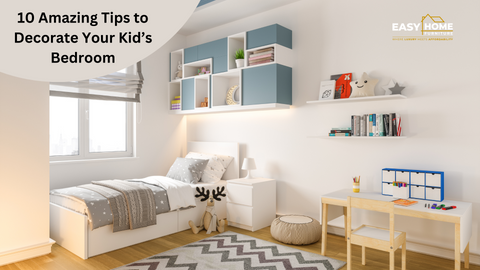When you think of a contemporary desk chair, don't just picture a modern piece of furniture. See it as a high-performance tool for your workspace, one that marries minimalist design, ergonomic science, and innovative materials. It’s built for support and endurance, all wrapped up in a clean, sophisticated package.
What Defines a Contemporary Desk Chair

Unlike the traditional, often bulky office chairs of the past, a contemporary desk chair is all about the elegant interplay between how it looks and how it works. This design evolution isn't just for show; it's a direct response to how we work today. With the rise of hybrid work and a much greater focus on our well-being, the humble desk chair has been upgraded from simple seating to a crucial part of our productivity and health.
This change is more than just a trend—it's big business. The Australian office furniture market, which includes these advanced chairs, was valued at around USD 1.8 billion in 2024. This boom is driven by a real demand for ergonomic solutions that look after our bodies while fitting into flexible, modern work setups. You can dig deeper into this market data on the IMARC Group's website.
To really grasp what sets these chairs apart, let's compare their core characteristics to the older, more traditional designs.
Key Features of a Contemporary Desk Chair
| Characteristic | Contemporary Approach | Traditional Approach |
|---|---|---|
| Aesthetics | Clean lines, minimalist silhouette, visually light. | Bulky frame, heavy padding, often imposing. |
| Materials | Breathable mesh, recycled polymers, lightweight alloys. | Thick leather, heavy wood, dense foam. |
| Ergonomics | Dynamic, intuitive adjustments, integrated lumbar support. | Basic height/tilt, often with manual, clunky knobs. |
| Functionality | Controls are seamlessly integrated into the frame. | Exposed levers and knobs, often complex. |
This table shows a clear shift in philosophy. Contemporary design isn't just a style; it's a completely different way of thinking about how a chair should serve its user.
The Core Philosophy of Contemporary Design
At its heart, the philosophy is all about intention. Every single curve, every material choice, and every mechanism has a clear purpose. It’s about stripping back the unnecessary to focus on what really counts: your comfort, your support, and your style.
A contemporary chair doesn't just fill a space; it enhances it. It’s designed to be a visually light yet functionally strong centrepiece that fits just as well in a sleek home office as it does in a corporate headquarters.
This approach results in features that are both beautiful and incredibly practical. You’ll notice things like:
- Minimalist Silhouettes: Think clean lines and sleek profiles that help reduce that feeling of visual clutter in your workspace.
- Innovative Materials: We're seeing more breathable mesh, smart textiles, and advanced polymers that are as durable as they are comfortable.
- Integrated Adjustments: The levers and controls are often cleverly hidden or built right into the chair’s frame, keeping the look clean and uncluttered.
Ultimately, a contemporary desk chair is defined by this perfect harmony. It’s a sophisticated tool designed for the way we work now, proving that you never have to choose between a chair that looks incredible and one that feels even better.
Understanding Ergonomics for Real Comfort
The word “ergonomics” gets tossed around a lot these days, but what does it actually mean for your day-to-day comfort? The best way to think about a truly ergonomic chair is to compare it to a bespoke suit. It’s not just about looking good; it's designed to fit your unique body shape perfectly, giving you support in all the right places. This personalised fit is the real secret to sitting comfortably all day long.
This demand for tailored support has completely reshaped the furniture industry. Globally, the office chair market was valued at nearly USD 14.69 billion in 2024, and a huge part of that is driven by our growing awareness of healthier workspaces. Here in Australia, features that were once considered luxuries—like adjustable height, proper lumbar support, and advanced tilt functions—are now pretty much standard. They're essential for reducing the musculoskeletal strain that comes from hours of sitting, a problem that’s only become more obvious with the rise of hybrid work. If you're interested in the numbers, Stellar Market Research has some great insights into these market trends.
This image below breaks down the key adjustable features that turn a simple seat into a powerful tool for your well-being.

As you can see, it's how all the elements, from lumbar support to seat tilt, work together that helps you maintain a healthy posture and takes the pressure off your spine and joints.
Dialing in Your Perfect Fit
Getting the ergonomics right isn't about finding one "magic" setting. It’s about a series of small, personalised adjustments that all work in harmony with your body. Each feature has a specific job to do in preventing aches and pains, helping you stay focused. Think of it like a tailor measuring your inseam and sleeve length; you need to "measure" the chair against your own proportions to get the fit just right.
Here are the crucial adjustments you'll want to get familiar with:
- Adjustable Lumbar Support: This is non-negotiable. The support should nestle right into the natural curve of your lower back. This simple adjustment prevents you from slouching forward and takes a massive amount of pressure off your spine.
- Seat Depth: To get this right, sit with your back firmly against the backrest. You should be able to comfortably fit two or three fingers between the back of your knees and the front edge of the seat.
- Armrest Height: Your armrests should be set so your shoulders are relaxed—not hunched up towards your ears. Your elbows should rest gently at a comfortable 90-degree angle.
- Tilt Tension and Lock: This handy dial controls how much pushback you feel when you lean back. You want it set so you can recline with a little bit of effort, which encourages movement without making you feel like you’re about to fall backwards.
The real goal of ergonomics isn't to lock you into one stiff posture. It's to support your body as it naturally moves throughout the day. A great chair moves with you.
Taking the time to master these settings is a game-changer for your long-term health. A properly adjusted chair can dramatically reduce your risk of developing chronic pain in your back, neck, and shoulders. You can find chairs with all these customisable features, like a high-quality ergonomic office chair, built specifically to offer this level of personalised support. By spending just a few minutes fine-tuning these settings, you turn a piece of furniture into a genuine tool for your well-being.
Choosing Materials for Style and Durability
The material of your desk chair is more than just a surface-level detail. It’s the very thing that dictates day-to-day comfort, how well the chair stands up to years of use, and the overall vibe of your workspace. It's a bit like choosing the right fabric for a suit – you need something that not only looks sharp but also feels right and performs under pressure.
Getting this choice right means your chair will handle the daily grind while effortlessly tying into your office aesthetic. Each material has its own personality and set of perks, from breezy mesh perfect for warm climates to classic leather that makes a serious statement.
The Most Common Material Choices
When you start shopping for a contemporary desk chair, you'll quickly notice a few materials dominate the scene. Getting to know their individual quirks is the best way to make a choice you’ll be happy with for years to come. Let's look at the main contenders.
- Breathable Mesh: This is a huge favourite in modern office design, and for good reason. Mesh allows for fantastic airflow, which is a game-changer during long days or in warmer Australian climates. It also provides a flexible, contouring support that moves with you.
- Upholstered Fabrics: If you want options, fabric is your best friend. It comes in a dizzying array of colours, weaves, and patterns, giving you total creative freedom. Fabric chairs also bring a softer, more residential feel to a workspace and usually offer a plusher seat than their mesh counterparts.
- Leather (Genuine and Faux): Nothing says "timeless authority" quite like leather. It’s famously durable and surprisingly easy to wipe clean, making it a brilliant, practical option for a chair that sees a lot of action.
Before we move on, let's break these options down into a quick comparison.
Contemporary Chair Material Comparison
Choosing the right material is a balancing act between aesthetics, function, and upkeep. This table lays out the pros and cons of the most common options to help you see which one fits your needs best.
| Material | Key Benefits | Best For | Considerations |
|---|---|---|---|
| Mesh | Excellent airflow and breathability; flexible, conforming support. | Hot climates, long work sessions, and minimalist office designs. | Can be less padded; lower-quality mesh may sag over time. |
| Fabric | Huge variety of colours and textures; soft and comfortable feel. | Creative workspaces and adding a touch of warmth or personality. | Can be harder to clean and may show wear more easily than other materials. |
| Genuine Leather | Highly durable and ages beautifully; premium, sophisticated look. | Executive offices, high-traffic areas, and long-term investment pieces. | Higher price point; requires occasional conditioning to prevent cracking. |
| Faux Leather | Affordable alternative to real leather; easy to clean and water-resistant. | Budget-conscious buyers who want the leather look without the maintenance. | Less breathable and can feel sticky; may peel or crack over time. |
Ultimately, the best material is the one that aligns with both your practical demands and your personal style.
The Rise of Sustainable Materials
Lately, there’s been a massive and welcome shift in furniture design towards sustainability. More and more of us are looking for products that aren't just stylish and well-made but also have a lighter footprint on the planet. This has pushed designers to get creative with eco-conscious materials, so you can build a workspace you truly feel good about.
A thoughtfully chosen material does more than complete a chair’s look; it reflects your priorities, whether that’s ultimate breathability, timeless elegance, or a commitment to sustainability.
This focus on greener options has brought some fantastic alternatives to the market. Keep an eye out for chairs made with recycled textiles, which cleverly turn post-consumer waste into new, hard-wearing fabrics. You'll also see more components with low-VOC (Volatile Organic Compound) finishes, which are much better for your indoor air quality. Choosing a sustainable contemporary desk chair doesn't mean sacrificing an ounce of style; it just means your purchase is made with a little more intention.
Matching Your Chair to Your Body and Workspace
You could find the most beautiful contemporary desk chair in the world, but if it doesn't fit you or your workspace, it's just an expensive mistake. Think of it like buying a pair of shoes—style is great, but the right fit is what actually delivers comfort and lets you get on with your day. To find the perfect chair, you need to get a little practical with a tape measure to make sure it gets along with both your body and your office setup.
Taking a few minutes to measure now saves you the headache of discovering your new chair is too tall for your desk or too bulky for the room. Proper alignment is more than just about feeling good in the moment; it’s a crucial part of your long-term health, preventing strain on your wrists, shoulders, and back. A chair that fits you properly is the bedrock of a productive, pain-free workday.
Finding Your Personalised Fit
Just like a tailor wouldn't dream of cutting fabric without taking measurements, you need to measure a chair against your own body to get that sweet spot of ergonomic support. The goal is to make sure every part of the chair supports you, rather than creating new pressure points. Let’s start with three key measurements.
- Seat Height: Sit down, plant your feet flat on the floor, and bend your knees to a 90-degree angle. The perfect seat height will have your thighs sitting parallel to the ground. This simple adjustment is vital for healthy blood flow.
- Seat Depth: With your back resting firmly against the backrest, check the space between the front edge of the seat and the back of your knees. You should be able to fit about two to three fingers in that gap. This stops the seat edge from digging in and cutting off circulation.
- Seat Width: You’ll want at least an inch of wiggle room on either side of your hips. This ensures you can shift and move around a bit throughout the day without feeling boxed in.
Syncing Your Chair and Desk
Once you’ve got a chair that’s a good match for your body, the next step is making sure it plays nicely with your desk. You’re aiming for a setup where your arms and wrists are properly supported, which dramatically cuts down the risk of repetitive strain injuries.
Your desk and chair should work as a team. When they are correctly synced, your arms should rest comfortably at a 90-degree angle, with your wrists straight while typing. This simple alignment takes enormous pressure off your shoulders and neck.
What if the chair is perfect but your desk height is off? If the desk is too high, an under-desk keyboard tray can be a fantastic solution. If it’s too low, a set of simple desk risers can give you the boost you need. It's all about getting to that neutral, relaxed posture.
Finally, don't forget the chair's overall footprint. Measure the spot where it's going to live, factoring in the width of the base and how much space you'll need to swivel and roll back without bumping into things. A chair that's too big can make an office feel cramped and chaotic. This is especially true in rooms that serve multiple purposes. For example, when you’re planning a bedroom, you have to think about clearance around big items; our guide to the best queen bed frames with storage in Australia touches on this kind of space optimisation. Applying that same foresight to your office chair will save you from a frustrating and costly mistake.
How Design Shapes Your Modern Office Aesthetic

A contemporary desk chair is so much more than just a place to park yourself for the day. It’s a statement piece, the anchor that can define the entire mood and aesthetic of your workspace. Think of it like the perfect pair of shoes that ties an entire outfit together; it can elevate a purely functional office into a space that feels cohesive, inspiring, and truly yours.
The right chair has a knack for pulling all the other elements in the room together, from the colour on the walls to the finish of your desk. This visual harmony is becoming a huge priority, both for businesses and for individuals setting up a home office. It’s no surprise that the Australian office furniture market is estimated to be worth around USD 2.46 billion in 2024, as people increasingly look for furniture that creates a unified, modern look. You can dive deeper into this trend with Mordor Intelligence's market analysis.
Matching a Chair to Your Design Style
To really nail that cohesive feel, you need to choose a chair that complements your existing decor. It's not just about picking something you like in isolation; the silhouette, materials, and colours all play a huge part in getting the aesthetic balance just right.
Let's look at a few popular design styles and how to find the perfect chair for each:
- Scandinavian Minimalism: For this look, you’ll want chairs with clean, simple lines. Think light-coloured wood accents, and unfussy fabric upholstery in neutral tones like grey, white, or soft pastels. It’s all about elegant simplicity and function without the frills.
- Industrial Chic: An industrial-style space calls for a chair with a bit of raw, edgy character. Look for designs featuring black metal frames, distressed faux leather, or dark wood finishes. The vibe should feel robust and almost utilitarian.
- Mid-Century Modern: This style is all about celebrating organic shapes and iconic forms from the '50s and '60s. A chair with a curved plywood back, slender tapered legs, or a pop of bold colour can become the perfect retro-inspired centrepiece.
The goal isn't just to find a chair that looks good on its own, but one that completes the visual story of your workspace. It should feel like it was chosen with real intention.
At the end of the day, the right contemporary desk chair does more than just support your back—it makes a statement about your personal style and your approach to work. By putting a little thought into its design, you can create a space that not only helps you be more productive but also genuinely inspires you every single day.
Simple Care for Long-Lasting Performance
Think of your new contemporary desk chair as an investment in your own wellbeing. And just like any other quality tool, a little bit of regular upkeep will keep it performing at its best, protecting its materials and mechanisms so it can support you properly for years to come. These simple steps are all it takes to keep your chair looking and feeling factory-fresh.
First up, regular cleaning. It’s the easiest way to preserve your chair’s finish, but different materials need different handling. Using the wrong method can cause damage, so it's best to get it right from the start.
- For Mesh: The best tool here is a vacuum with a soft brush attachment. This will gently lift dust and debris right out of the weave. If you've got a light stain, a cloth dampened with water and a tiny bit of mild soap will usually do the trick.
- For Fabric: A quick vacuum works wonders for fabric upholstery too. When spills happen, the key is to blot immediately—never rub! Before you reach for a specialised cleaner, check for the manufacturer’s cleaning codes, which are usually on a tag somewhere under the seat.
- For Leather: A simple dusting with a soft, dry cloth is perfect for daily upkeep. Every so often, wipe it down with a slightly damp cloth. To keep the leather supple and prevent cracking, treat it with a quality leather conditioner every 6-12 months.
Mechanical Check-Ups and Adjustments
Beyond just keeping it clean, it's a smart move to give your chair a quick mechanical check-up every few months. It's like a tune-up for your car; it keeps everything running smoothly and safely. Over time, the constant little movements of daily use can cause screws and bolts to loosen.
Just take a few minutes to tighten any accessible fasteners, paying close attention to the ones connecting the armrests, the seat mechanism, and the base. While you're down there, have a look at the casters. They're magnets for hair and debris, which can stop them from rolling freely. A quick clean-out is an easy fix that makes a world of difference to how your chair glides.
Proactive care isn’t just about looks. It’s about maintaining the chair’s structural integrity and ergonomic performance, which are the very reasons you bought it in the first place.
These small, consistent efforts really do pay off. They don't just extend the life of your chair; they make sure it continues to be a reliable partner for your health and productivity. For more detailed advice on looking after specific surfaces, our guide on how to care for laminated products has some extra tips that you can apply to various furniture parts.
Common Questions About Contemporary Desk Chairs
Choosing the right contemporary desk chair is a big decision, so it's completely normal to have questions. To help you feel sure about your choice, we've rounded up some of the most common queries we hear and answered them with clear, practical advice.
Think of this as the final check-in before you commit. Getting these details right means you'll end up with a chair that not only looks brilliant in your space but also gives you the ergonomic support needed for a comfortable and productive day.
How Much Should I Expect to Spend in Australia?
The price of a good contemporary desk chair can vary quite a bit, depending on the brand, what it's made of, and how many ergonomic bells and whistles it has. For a quality, fully adjustable chair, you're typically looking at a starting price in the $300-$500 range.
If you're after more premium materials and advanced adjustments, mid-range models often sit between $500 and $1,200. Of course, high-end, designer chairs can easily go beyond that. It really helps to think of this as an investment in your health—a durable, supportive chair prevents aches and pains, paying for itself in comfort and focus.
Are Mesh Backs Better Than Upholstered Ones?
This is a classic question, and the truth is, one isn't automatically better than the other. It all boils down to your personal preferences and your work environment.
- Mesh chairs are fantastic for breathability. This makes them a brilliant choice for our warmer Australian climate or for anyone who tends to feel the heat during the day.
- Upholstered fabric chairs usually offer a bit more cushioning and come in a huge range of colours, which can add a softer, more inviting look to your office.
- Leather chairs give you that premium, executive look and are incredibly durable, though they don't breathe as well as mesh.
Ultimately, the best choice hinges on what you value most: cool airflow (mesh), plush comfort and style (fabric), or a timeless, hard-wearing finish (leather).
How Do I Know if the Lumbar Support is Right?
Good lumbar support shouldn't feel pushy or aggressive. Instead, it should feel like a gentle, supportive hug for your lower back, fitting perfectly into its natural inward curve. It's there to encourage good posture, not force your spine into an unnatural position.
The best chairs have adjustable support that you can move up and down, and sometimes even in and out to change the depth. When you're sitting correctly, you should feel consistent, comfortable pressure right where you need it. If you get a chance to try a chair, make sure this support feels natural and doesn't create any new pressure points. And remember, good posture isn't just for your workday; protecting your back around the clock is key, which you can learn more about by reading our article on whether you should buy a mattress protector.
At DLB Furniture, we believe a great workspace starts with the perfect chair. Explore our curated collection of contemporary desk chairs designed for modern aesthetics and all-day comfort. Find your ideal chair today!










